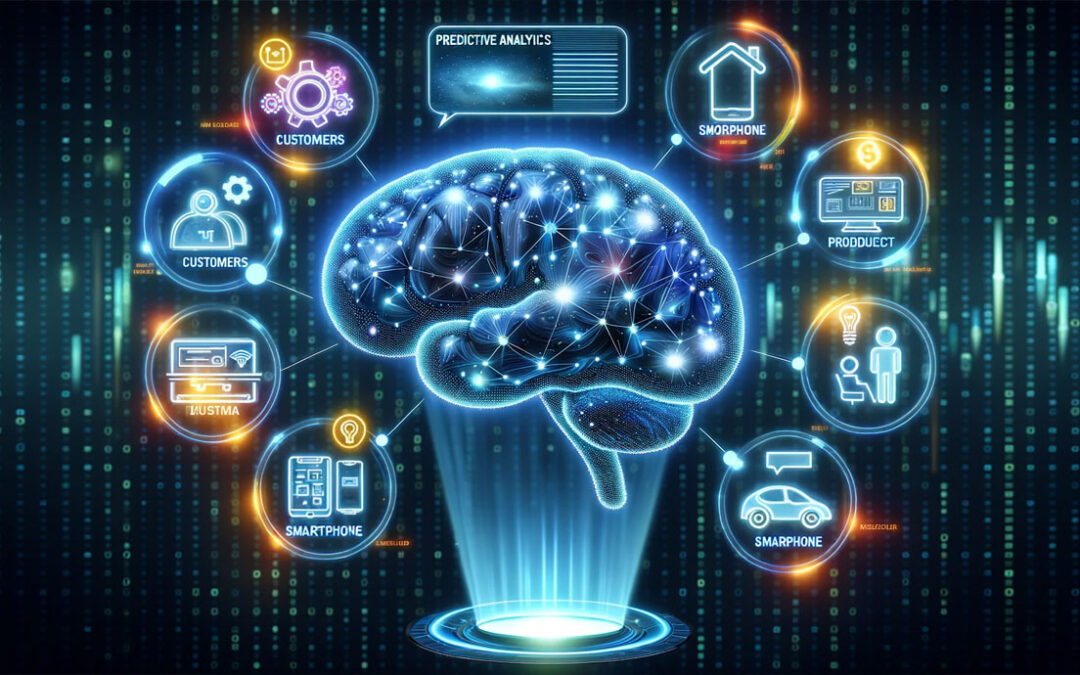In the ever-evolving landscape of business and marketing, staying ahead of your customer’s needs is crucial. It’s not just about meeting their current demands; it’s about anticipating what they’ll want in the future. This is where the powerful combination of AI and predictive analytics comes into play. In this article, we’ll explore how predictive analytics, coupled with an understanding of customer behavior, can help businesses predict and meet customer needs ahead of time.
Predictive Analytics: A Glimpse into the Future
Predictive analytics is a game-changer in the business world. It utilizes statistical algorithms and machine learning techniques to identify future outcomes based on historical data. In simpler terms, it’s a crystal ball for your business strategy, allowing you to anticipate what your customers might do next.
So, how does predictive analytics work its magic? It begins by analyzing massive amounts of historical customer data. This data could include purchase history, browsing behavior, demographics, and more. With the help of advanced algorithms, it identifies patterns and trends within this data. For instance, it can reveal that customers who purchase a specific product are highly likely to purchase another product within a certain timeframe.
By understanding these patterns, businesses can make informed decisions. They can forecast trends, anticipate customer needs, and tailor their marketing strategies accordingly. This means that rather than merely reacting to customer demands, businesses can be proactive in meeting those demands before customers even express them.
The Importance of Predicting Customer Needs
Why is predicting customer needs so important? It’s a matter of staying ahead of the competition and delivering exceptional customer experiences.
Competitive Edge: Businesses that can predict and fulfill customer needs in advance gain a significant competitive edge. They can offer innovative products and services, setting them apart from competitors who are still playing catch-up.
Customer Satisfaction: Anticipating customer needs leads to higher customer satisfaction. When customers feel that a business understands them and can provide what they need before they ask, it fosters a sense of trust and loyalty.
Efficient Resource Allocation: Predictive analytics allows businesses to allocate resources more efficiently. Instead of spreading resources thin, they can focus on areas that are likely to yield the best results.
Cost Savings: By forecasting customer demands, businesses can reduce waste and lower operational costs. This efficiency can have a significant impact on the bottom line.
Assessing Customer Needs Over Time
Predicting customer needs isn’t a one-time effort. It’s an ongoing process that requires continuous assessment and adjustment. Here’s how you can assess customer needs over time:
Data Collection: Continue gathering customer data from various sources, such as website analytics, surveys, and social media.
Regular Analysis: Regularly analyze the data to identify changing trends and patterns in customer behavior.
Feedback Loop: Encourage and act on customer feedback. What customers say is as valuable as their actions.
Algorithm Updates: Keep your predictive analytics algorithms up to date to reflect changes in customer behavior accurately.
Market Research: Stay informed about industry trends and market changes that may influence customer needs.
Methods of Predicting Consumer Behavior
Predictive analytics encompasses various methods for predicting consumer behavior. Some common approaches include:
Machine Learning Algorithms: These algorithms, such as decision trees and neural networks, can uncover complex patterns in large datasets.
Customer Segmentation: Group customers into segments based on shared characteristics, making it easier to predict the behavior of specific customer groups.
LTV Prediction: Predicting the lifetime value of a customer can help tailor marketing efforts towards high-value customers.
Recommendation Engines: These engines use past behavior and preferences to make personalized product recommendations.
Churn Prediction: Identifying customers at risk of churning can help businesses take proactive measures to retain them.
ChatGPT: Enhancing Predictive Analytics and Customer Interaction
Now, where does ChatGPT fit into all of this? Imagine having an AI tool that not only predicts customer behavior but can also interact with customers based on these predictions. That’s precisely the potential ChatGPT brings to the table.
ChatGPT represents the next level of predictive analytics, enhancing customer experience by delivering hyper-personalized interactions and content. It can analyze customer queries and provide responses that align with their needs, preferences, and past interactions. This level of personalization goes beyond what traditional marketing strategies can achieve.
In conclusion, predicting customer needs ahead of time is not just a possibility but a necessity in today’s competitive market. The marriage of predictive analytics and AI, exemplified by ChatGPT, empowers businesses to understand and cater to customer needs before they even arise. By staying attuned to customer behavior and harnessing the insights derived from predictive analytics, businesses can build stronger relationships with their customers and secure a brighter future.

